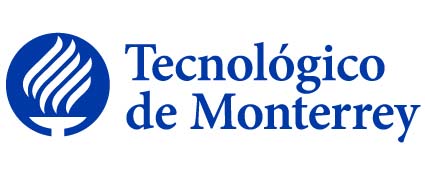
|
|||||
Disciplina asociada:Tecnologías Electrónicas |
|||||
Escuela:
Ingeniería y Ciencias
|
|||||
Departamento Académico:
Computación
|
|||||
Programas académicos: |
|||||
Requisitos:(Haber Aprobado TE2010 y Haber Aprobado TE3025) |
|||||
Equivalencia:PV1028 |
|||||
Intención del curso en el contexto general del plan de estudios: |
|||||
|
Intención del curso en el contexto general del plan de estudios: |
|||||
Objetivo general de la Unidad de Formación: |
|||||
| Comprender la arquitectura interna de un microcontrolador 8051. Comprender las instrucciones del 8051 para desarrollar aplicaciones basadas este microcontrolador. Aprender cómo usar armador X8051, el unificador y el simulador AVSIM51 para el microcontrolador 8051. Comprender cómo llevar a cabo una conexión de memoria externa o dispositivo externo. Analizar la estructura interna del puerto I/O del microcontrolador. Aprender cómo programar los contadores de microcontrolador para desarrollar aplicaciones con contadores. Comprender el concepto de arbotantes y saber cómo aplicar ese concepto para lograr el mayor rendimiento del potencial del microcontrolador en el desarrollo de las aplicaciones. Comprender cómo el puerto de comunicación en serie funciona para poder desarrollar aplicaciones en que la comunicación entre un dispositivo externo y el microcontrolador sea posible | |||||
Técnica didáctica sugerida: |
|||||
| Aprendizaje colaborativo | |||||
Bibliografía sugerida: |
|||||
|
LIBROS DE TEXTO: * Ramesh S. Gaonkar, Fundamentals of Microcontrollers and Applications in Embedded Systems (with the PIC18 Microcontroller Family), 1era, THOMSON Delmar learning, 978-1-4018-7914-3 / 1-4018-7914-4 |
|||||
Perfil del Profesor: |
|||||
|
(141001)Maestría en Ingeniería Eléctrica/Electrónica y Comunicaciones ; (110701)Maestría en Ciencias Computacionales ; (140901)Maestría en Ingeniería Computacional ; (141001)Doctorado en Ingeniería Eléctrica/Electrónica y Comunicaciones ; (110701)Doctorado en Ciencias Computacionales ; (140901)Doctorado en Ingeniería Computacional CIP: 141001, 110701, 140901 |
|||||
|
|||||
Discipline:Electronic Technologies |
|||||
School:
Engineering and Sciences
|
|||||
Academic Department:
Computing
|
|||||
Programs: |
|||||
Prerequisites:( TE2010 and TE3025) |
|||||
Equivalences:PV1028 |
|||||
Course intention within the general study plan context: |
|||||
Course objective: |
|||||
| Understand the internal architecture of microcontroller 8051. Understand the 8051’s set of instructions to develop applications based ion this microcontroller. Learn how to handle X8051 assembler, the linker and the AVSIM51 simulator for microcontroller 8051. Understand how to execute an external memory or external device connection. Analyze the internal structure of the microcontroller’s I/O port. Learn how to program the microcontroller’s counters to develop applications with counters. Understand the concept of switches and know how to apply said concept to make the most of the microcontroller’s potential in the development of applications. Understand how the serial communication port works in order to be able to develop applications in which communication between an external device and the microcontroller is possible | |||||
Teaching and learning tecniques: |
|||||
| Collaborative learning | |||||
Suggested Bibliography: |
|||||
|
TEXT BOOKS: * Ramesh S. Gaonkar, Fundamentals of Microcontrollers and Applications in Embedded Systems (with the PIC18 Microcontroller Family), 1era, THOMSON Delmar learning, 978-1-4018-7914-3 / 1-4018-7914-4 |
|||||
Academic credentials required to teach the course: |
|||||
|
(141001)Master Degree in Electrical Engineering/ Electronics and Communications and (110701)Master Degree in Computational Sciences and (140901)Master Degree in Computational Engineering and (141001)Doctoral Degree in Electrical Engineering/ Electronics and Communications and (110701)Doctoral Degree in Computational Sciences and (140901)Doctoral Degree in Computational Engineering CIP: 141001, 110701, 140901 |
|||||